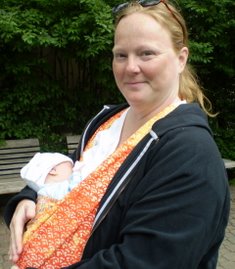Cool Outing Possibility:
Ohio River Explorers Field Trip
This just recently came through on one of the many homeschooling lists I am on and it looks like it could be great fun.... http://www.ohioriverfdn.org/ The cost is $6 per child, a bit steeper than what I like to pay for programs, but it really sounds worthwhile!
From the webpage:
Sample Field Trip Timetable :
A typical field trip lasts 4-5 hours with a 30 minute sack lunch break. Lunch is not provided by Ohio River Foundation and should be brought by the student or school. All students will rotate through each of the learning stations for 1 hour per station.
9:30am: The group arrives and is greeted by the Ohio River Foundation leader, who discusses the day's plans and safe behavior.
9:45am: Learning Station 1
10:50am: Learning Station 2
11:55am: Lunch Break
12:30pm: Learning Station 3
1:35pm: Closing Activity
2:00pm: Group Departure
Learning Stations:
The following are our basic learning stations. Generally, program participants rotate through 3 of the 6 available learning stations for 1 hour per station. This format allows us to connect with students in small groups where hands-on learning is easier to facilitate. The stations are chosen by the teacher at the time of registration but can be changed by the teacher before the actual visit. River Explorer learning stations can be customized based on the interests of the classes. If you are interested in something we don't have here, please contact us and we will work with your specific needs.
• Mussel Mania : Did you know there are monkey face and pig snouts in the Ohio River? Just what does a baby bi-valve look like? How many eggs do mussels produce at one time? Discover the unique life cycles of the mussels of the Ohio River and see how they have evolved to survive as a part of the river's ecosystem. Learn how the mussels' well adapted anatomy helps them resist attack from most predators. Did you know the Zebras are attacking? This exotic invasive species is muscling its way into the ecosystem, destroying the native populations, and has made species such as the pink mucket, orangefoot, fat pocketbook, clubshell, and fanshell endangered. Learn how these interlopers starve the natives and what can be done to stop them!
• Fish Factor: What can you tell about the way a fish lives by how it is physically structured? The answer is… everything! Don gloves and examine preserved and live fish specimens to learn about fish morphology, life cycle, and population levels. Biology at its best!
• Planktonia: Some squirm, some undulate, some pulse and others scoot. What are these bizarre looking critters? They are one of the smallest creatures on the planet, Plankton. For something so small they are arguably the most important member of any aquatic food chain. We'll throw plankton nets and examine our catch under microscopes. Everyone will learn about the important role of plankton in the Ohio River food web and the environmental conditions that affect population size. Endless fun and knowledge at the end of your microscope slide.
• River Chemistry: C.S.I. team needed! We found some dead fishes and we need a top notch investigative team to figure out why. Our prime suspect is the water. We need you to test samples of river water for oxygen, temperature, and more. Learn why these parameters are so important to river health and fish longevity and vitality.
• The Water Cycle and River Ecology: Through games, puzzles, and group activities, piece together an overview of the Ohio River hydrologic cycle and ecosystems, learn how to tell what caused certain erosion patterns, and focus on the impact human activities have on the health of the river and its riparian zone. Two heads are better than one when solving a problem, but ten heads are better than two. These activities allow students to use innovative “out-of-the-box” concepts and really stretch their mind!
• All Together Now: Learn about the differences between food chains and food webs in the Ohio River. Create a food web and learn about the various factors that can disrupt the web. This exercise takes pieces from all of the other activities and amalgamates them into a big picture lesson. Guaranteed to make students look at the river in a new light.
Through discussion and hands on activities, all modules will explore what changes, small and large, can improve the environment and the Ohio River. By learning about their individual roles in the environment, students will be empowered to live in an ecologically friendly way.
Thursday, February 10, 2005
Subscribe to:
Post Comments (Atom)





No comments:
Post a Comment